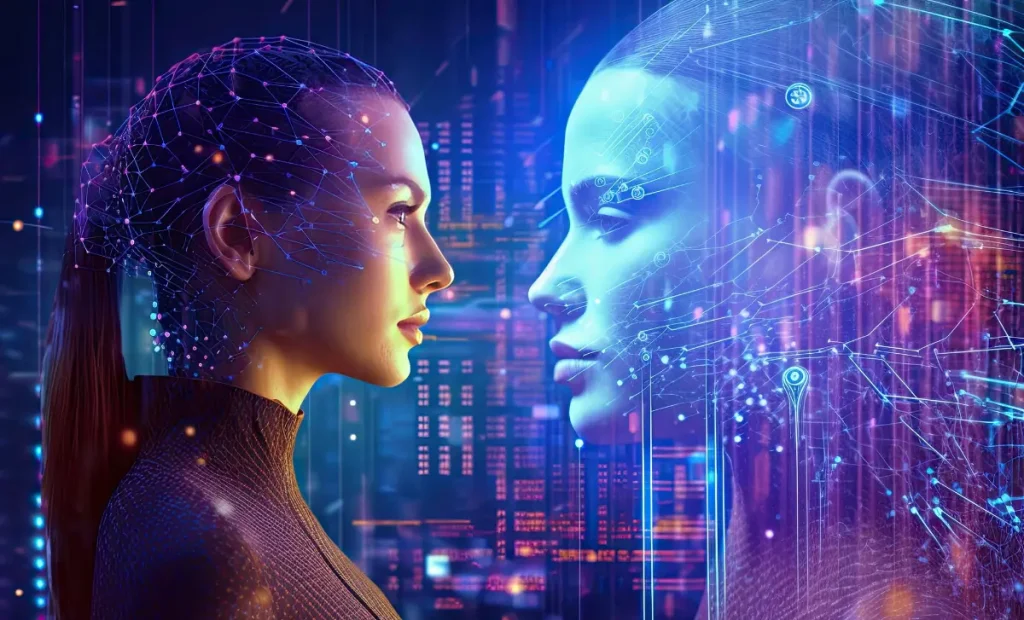Ever since artificial intelligence came to the mainstream, everyone thought it is the future. Humans will be replaced, but that’s hard to say because AI machines only mimic human intelligence. A new concept called synthetic intelligence is beyond artificial intelligence and may bring a breakthrough in our world.
Let’s learn what is synthetic intelligence and how it is different from AI.
What is Synthetic Intelligence?
The word synthetic in SI does not mean artificial or fake. Synthetic intelligence means a machine can behave and think like a human. It is created by the synthesis of foundational elements to create a genuine machine that can perceive or feel things. Many compare artificial intelligence to synthetic artificial intelligence or believe both are the same. Let’s get clarity on this.
Artificial Intelligence vs Synthetic intelligence: What’s the Difference?
AI systems are not what we have thought of, they are not at all intelligent. They cannot think on their own or make decisions like us. Instead, these so-called intelligent machines copy humans. In other terms, they have simulated intelligence.
On the other hand, SI systems will be real and not artificially developed intelligence. They will be able to think, learn, and feel just as we do.
For a simple explanation, think of AI vs SI as AI being a skilled actor, who flawlessly copies human behavior. SI, on the other hand, aspires to be the real deal.
It focuses on the “synthesis” of a new form of intelligence. A unique entity born from the combination of advanced algorithms and, potentially, new hardware paradigms.
Though, we can call SI as an extension of artificial intelligence.
How Does Synthetic Intelligence Work?
Not completely clear but researchers are exploring various ways. Subsymbolic AI is one of them where machines process information by replicating the human brain’s non-conscious processes.
Another approach is emergence, where intelligence arises from the complex interaction of many smaller parts within a system.
There are even more radical theories like Psi-Theory, which proposes harnessing non-physical phenomena for machine intelligence. These are just a few examples, and the key here is that SI goes beyond artificial intelligence, simply replicating human thought patterns.
The Technology Behind Synthetic AI
At the core of synthetic intelligence are several advanced technologies and methodologies.
- Neural Networks: These computational models, inspired by the human brain, will be crucial for developing SI which can learn from data and improve over time.
- Machine Learning and Deep Learning: These techniques will allow SI to process vast amounts of data, recognize patterns, and make decisions with minimal human intervention.
- Computational Power: The rise of high-performance computing and cloud infrastructure will make it possible to train and deploy complex SI models.
Various methodologies, such as reinforcement learning, which enables systems to learn through trial and error will greatly help in making SI systems.
Natural language processing (NLP) is another methodology that will improve human-to-machine interactions. These core technologies and techniques will help in developing SI systems that work independently and can make tough decisions.
Is SI the Future?
Synthetic intelligence might seem like science fiction right now, but research continues to advance. It has the potential to reshape our world in ways we can only begin to imagine.
However, developing SI systems will not be without any challenges. Adding human-like consciousness and the ability to handle real-world complexities to these systems involves ethical and technical challenges. The goal would be to ensure responsible development and use SI for the betterment of humanity.
FAQs
- What is the future of artificial intelligence?
The future of artificial intelligence holds the potential for profound advancements, particularly in fields like healthcare, transportation, and customer service. As SI vs AI continues to evolve, we may see more seamless integration of human-like intelligence in machines. - What is the future of artificial general intelligence?
The future of artificial general intelligence (AGI) will depend on how quickly we can develop systems that go beyond simulated intelligence and approach the capabilities of synthetic intelligence, which is capable of learning, feeling, and thinking like humans. - Is ChatGPT really artificial intelligence?
ChatGPT is an example of simulated intelligence that mimics human conversations through AI algorithms. While it performs impressively, it does not possess true synthetic intelligence as it lacks consciousness and independent thought. Therefore, it is AI vs SI rather than pure synthetic intelligence.



